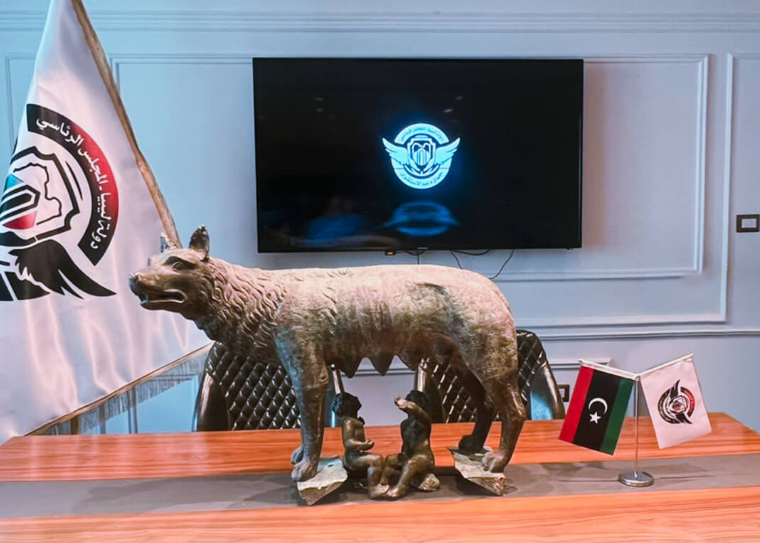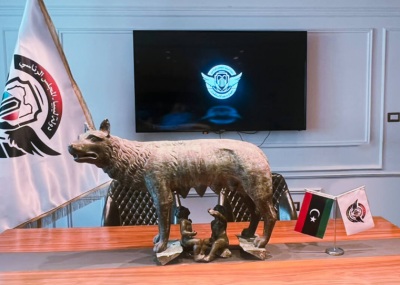Libyan authorities have discovered a large bronze statue of a she-wolf that was once mounted on a column in downtown Benghazi before it disappeared decades ago. The statue was found on a farm belonging to a man who claimed he purchased it as scrap metal. Authorities received a report regarding the statue, which dates back to the colonial era, and located it on a farm near Benghazi owned by a person named Said Mohammed Bourbeida, who told authorities that he bought the statue from a scrap yard because he liked its shape. Bourbeida, 80 years old, kept the statue, which depicts the Capitoline Wolf illustrating a legendary scene from ancient Rome, in an open space under a large tree next to his home terrace.
The Italian colonial authorities erected the statue in the new city of Benghazi, which they were constructing in the 1930s, as a means of reinforcing the connection between the ancient Roman rule over Libya and the modern Italian colonial rule of the country. After Libya gained independence, authorities removed the she-wolf statue from its pedestal, and it disappeared after Muammar Gaddafi came to power in 1969, during a revolutionary period that witnessed the erasure of symbols of foreign colonial rule.
At some point, the statue lost its front legs, along with the two infant statues that represented Romulus and Remus, the legendary founders of Rome who were said to have been raised by the she-wolf. The statue is now placed in front of the Department of Antiquities in Benghazi, resting on concrete blocks while awaiting potential restoration.
Libya was an important Roman province, with the coastal cities of Sabratha and Lepcis Magna, whose temples and stone theatres still stand proudly along the Mediterranean coast. However, many priceless Libyan artifacts have disappeared, looted by Europeans during colonial times, seized after independence, or stolen during the chaos that followed the NATO-backed uprising in 2011. Khaled Al-Hadar, a Libyan researcher in stolen antiquities, stated that heritage monitoring was weak in Libya and did not begin until 1974, which was after the disappearance of the she-wolf statue.




